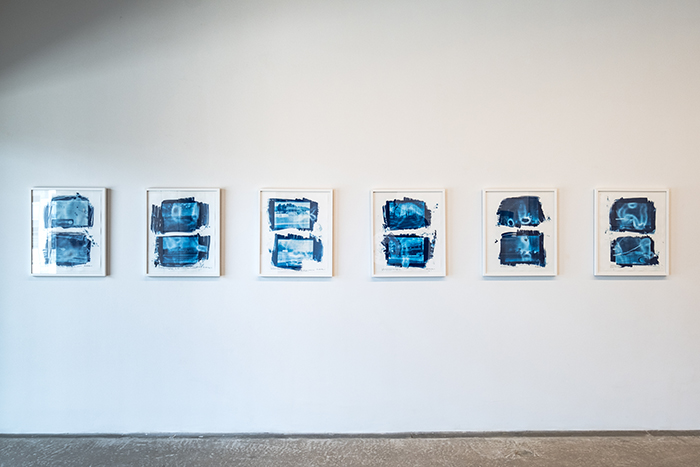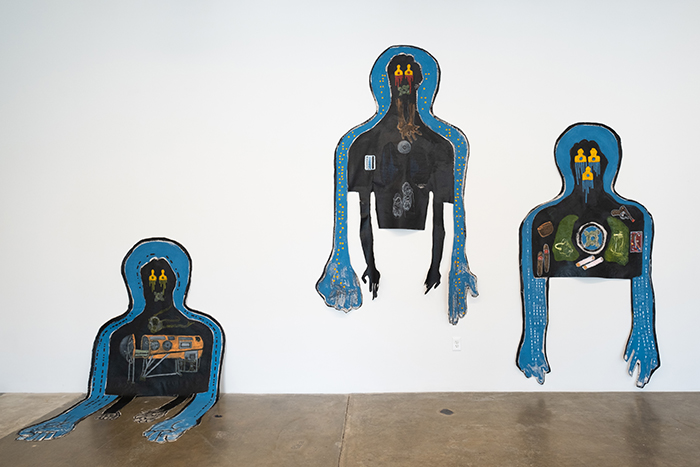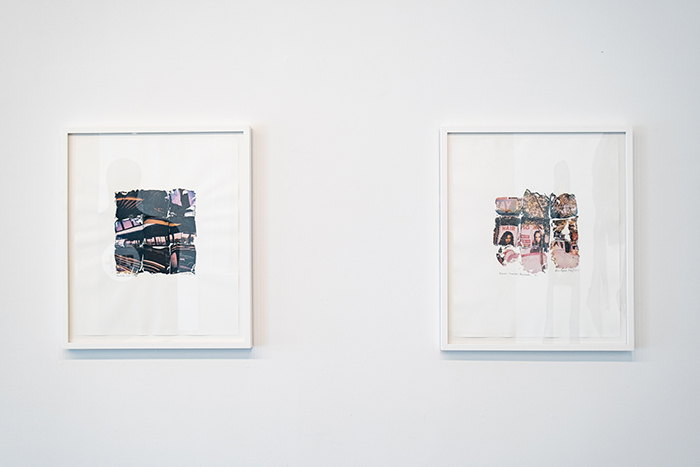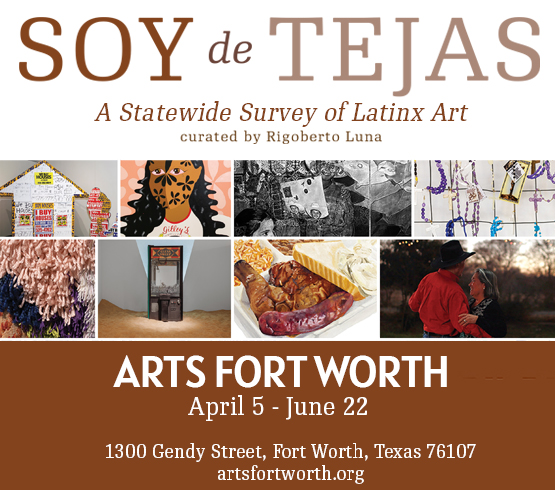Language is everywhere,” says Christopher Blay, artist, art critic, and newly appointed chief curator at Houston Museum of African American Culture.
Over the past two and a half years, as Blay was immersed in his writing and editorial work at Glasstire, his thoughts became increasingly focused around writing, text, and language. His studio practice soon began to absorb some of those connections.
Fittingly, he was already percolating some powerful ideas when he received the invitation from Big Medium to show his work. With Power, Traps, and Targets, his first solo show in three years, on view in Austin through Oct. 9, Blay continues his focus on the struggle for justice and equality. And the relationship between power and language—whether visual, spoken, or written—is front and center.
The artist explains that he came to his own layered practice relatively late, pursuing photography at the Tarrant County College, then at Texas Christian University where he majored in photography and art history which gave him a strong introduction to academic art. In 2000, he formed the photo collective Group F8, the germination of his curatorial curiosity, with original members Julie Almendral, Elizabeth Bowie, Tanya Habjouqa, James Johnston, Loli Kantor, and Nick Prendergast.
Power, Traps, and Targets, the title of which is derived from the common shooting range target sheet and the Black power fist afro pick, brings that reality to the fore.
“The exhibition surveys issues that are important to me. Being part of the fight for justice and equality through art and social practice is embedded in this work,” he says.
Integral to the exhibition are ideas of power—who or what has it or wants it, when and where it changes hands and forms. Further contextualization lies in the phrases of our everyday language—power grid, power grab, power surge, power failure.

1 ⁄7
Installation view, Christopher Blay, Power, Traps, and Targets, September 10 - October 9, 2021 at Big Medium in Austin.

2 ⁄7
Installation view, Christopher Blay, Power, Traps, and Targets, September 10 - October 9, 2021 at Big Medium in Austin.

3 ⁄7
Installation view, Christopher Blay, Power, Traps, and Targets, September 10 - October 9, 2021 at Big Medium in Austin.

4 ⁄7
Installation view, Christopher Blay, Power, Traps, and Targets, September 10 - October 9, 2021 at Big Medium in Austin.

5 ⁄7
Installation view, Christopher Blay, Power, Traps, and Targets, September 10 - October 9, 2021 at Big Medium in Austin.

6 ⁄7
Installation view, Christopher Blay, Power, Traps, and Targets, September 10 - October 9, 2021 at Big Medium in Austin.

7 ⁄7
Installation view, Christopher Blay, Power, Traps, and Targets, September 10 - October 9, 2021 at Big Medium in Austin.
For the series of Polaroid transfers titled Power Transfer, Blay made pilgrimages to sites of police brutality against Black people. For example, he photographed the store where NYPD officer Daniel Pantaleo choked and killed Eric Garner, and the train station platform in Oakland where BART police officer Johannes Mehserle shot and killed Oscar Grant.
Blay wanted to encode the exhibition with the language and the information that these cases provide, rather than create overt or didact relationships. His choice to employ conceptual and physical means to transfer and transpose the images is just one of his approaches that allows for a shift in power dynamics.
Throughout the other works in the exhibition, Blay uses symbols and codes that speak an Afrofuturist language (a sensibility that has appeared in his previous work as well) such as Liberian Nitien, framed here as a symbol of protection, from the Kru and Grebo tribes of Blay’s father and mother, respectively. And viewers may recognize similar target range silhouette cut-outs from his earlier works such as Cos N!&&@+$ Can’t Breathe, an “installation that inhabits the agony of black bodies under fire from police.
“This body of work, the embedded codes, materials, and information, speaks to how the lives of the folks directly impacted by injustice is impacting society in the struggle for justice and equality,” says Blay.
Symbiotic nature also plays a role in Feel Me, a participatory, wearable piece for which exhibition visitors don headphones and a haptic vest to hear and feel the reverberations of the recorded sounds of gunshots. While the connections to police killings by gunfire are obvious, the phrase “feel me” on the black target silhouette in the vest wearer’s line of sight points equally overtly to the power of language.
—NANCY ZASTUDIL




